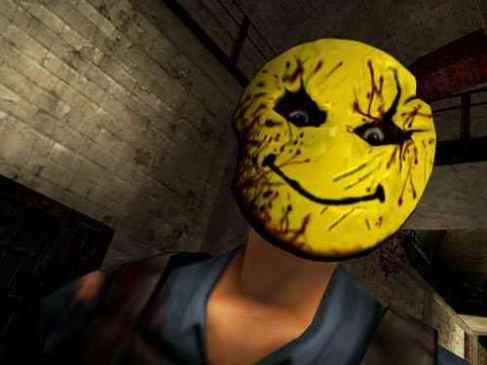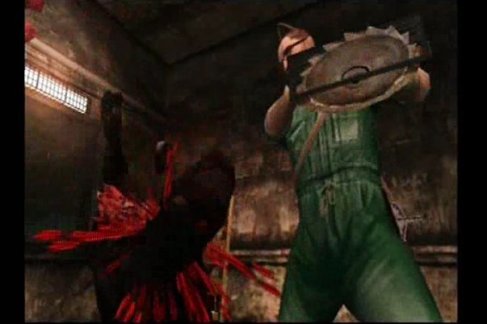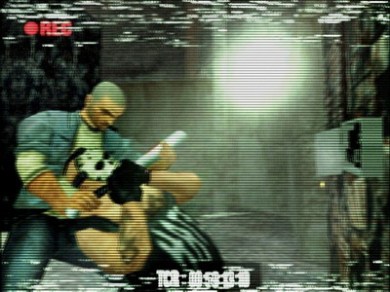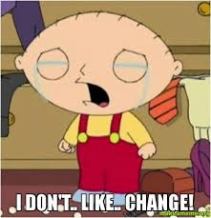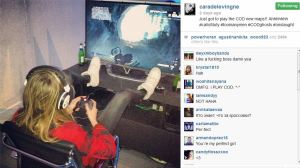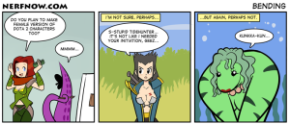Manhunt was an extremely controversial game that was originally released in 2003 on PS2, X-Box and PC. The story follows a Death Row convict whom has been released into the city, on provisor that he kills multiple people, in the most gruesome ways possible, whilst being filmed on camera for an underground Film Director named Lionel, whom then on-sells the videos to buyers from the black market. The game was banned in multiple countries, but made it’s way to nationwide release in New Zealand. I sadly, have played this game. I stupidly hired it out when i was 15, with the help of my mother, but that was under the assumption that It’s content and narrative focussed on a ‘wrongly imprisoned man, whom breaks out of jail”. Oooooh how wrong I was….. The game is questionable as least and can be seen as highly problematic in so many ways. BUT before I continue, watch this clip and I’ll unpack some of the major issues I’ve found with Manhunt in relation to violence, or representations of violence.
http://www.youtube.com/watch?v=t0NQJSGavKg
Okay, so now that you’ve seen how to: suffocate a man with a plastic bag, snap another mans neck, smash a Policeman with his own barton till the blood flows out of his head, drive a hammer through someones skull, guts and face, stab someones chest multiple times, bludgeon someone with a baseball bat, decapitate someone with a chainsaw, and ‘bandy-saw’ someones neck with sharp wire…… let’s move onto gameplay.
The Gameplay: The aim of the game is to murder people, and not just to execute them or kill them quietly and quickly, but to torture them with various melee attacks, weapons and camera angles. Yes that’s another element of the game. You have a rotating camera that follows you throughout the diegesis, so you can watch your killings in any angle you want, all with gruesome sound FX which only makes this game feel so much worse. The player is rewarded for his masochism, and players of the PS2 version even have the added option to attach microphones to their game platforms, in order to use their own voices to distract unsuspecting victims, luring them toward the shadows and their bloody demise. The introduction of the interactive aspect of the voice-commands give rise to questions of immersion. Is your voice within the diegesis a technique that draws a gamer in further ? Hmmmmm… lets look even further.
The Procedure: The game can’t continue if the gamer doesn’t partake in gory ‘level three’ murder (‘level three’ is an indicator of the intensity of the murder, more blood and gore = higher level). There is no choice between right and wrong. There is only one path. The plot of the game pushes the gamer to kill others, so that he can earn his freedom, and his family back, but any person with an understanding of the justice system, would see that more murder isn’t the path to freedom.
The Representation: The game is presented in an all male world. I think this feeds a stereotype that women don’t murderer which is false. The only time a female is present in the game, is when they are positioned as the family of the protagonist. I also found that a lot of ‘gang culture’ is thrust into this game, and gang groups are situated as one of the main evil yet again. Sadly in a real life turn of events, there was a murder of a young man by his best friend. The mother of the accused stated that “my son had been playing this game continuously” before he killed his friend. I know that the media do create narratives and don’t have a good relationship with the videogame industry, but it really is a new field of study, and we can’t completely rule out how engaged, how immersed, or how affected this young man was by Manhunt.
The Other Side: Some game critics heralded this game as pushing the envelope from game to artwork, saying that “Manhunt is theClockwork Orange of video games, holding your eyes open so as to not miss a single splatter — asking you, is this really what you enjoy watching? Had Manhunt been poorly made, using the snuff film angle as a cheap gimmick, the game would have been shameful and exploitative. What elevates it to a grotesque, chilling work of art is both presentation and game play“. – I to some extent see how pushing the boundaries can and have been beneficial to contemporary societies for example in the fight for equality, but still have some reservations as to how artistic this is. These types of killing sprees are not teaching me anything, other then that money and freedom seem to control anyone to do anything, and that brings me to the next point…
The Rhetoric: What types of things is Manhunt trying to teach me ? I feel the game teaches people to to some extent, admire vigilanteism. The protagonist kills gang members and corrupt cops, which plays into that notion of bad = you deserve to die. I also think this game teaches people to sympathize (only merely) with mass murderers, placating that this protagonist and possibly many murderers, only kill for freedom or for family. The game teaches me that brutality and murder is synonymous with the goings-ons in the black-market, and It also teaches me that vengeance is a goal, and the sole activity that brings equilibrium to the protagonist because ***SPOILER ALERT*** (you end up murdering the film director, and your biggest competition, another mass-murdered whom also kills on camera)
The game did end up being banned in multiple countries due to it’s excessive violence, but what do you think ? Is censorship needed ?
Post your responses below.

